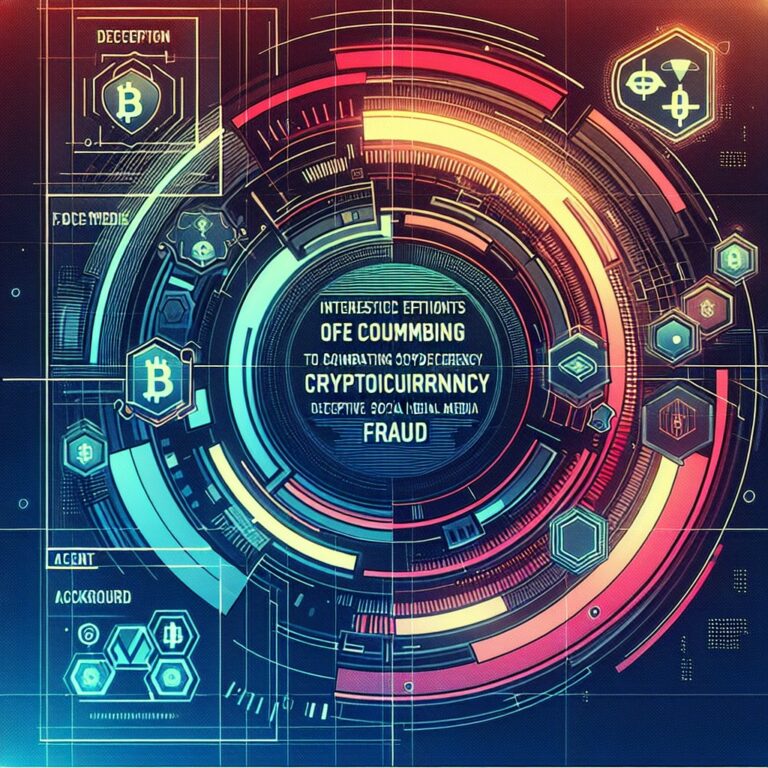Australian Securities and Investments Commission (ASIC) is ramping up its efforts against cryptocurrency fraud, shifting gears from merely dismantling malicious websites to targeting deceptive social media ads. As of now, crypto scams account for a staggering one-fifth of ASIC’s takedown operations over the past two years, underscoring the persistent threat these scams pose to investors.
Unmasking the Digital Mirage
In a world where digital assets have become ubiquitous, the rise of crypto scams shouldn’t come as a surprise. The allure of quick profits and the often opaque nature of cryptocurrency transactions create a fertile ground for fraudsters. ASIC’s recent pivot to scrutinizing social media ads is a testament to the evolving landscape of crypto scams. According to sources within the commission, there’s a growing concern that these ads are an insidious tool—enticing unsuspecting individuals into fraudulent schemes with promises of high returns.
One industry expert, Lisa McMillan, a crypto analyst based in Sydney, remarked, “Social media has become a hotbed for scams. It’s where people are most vulnerable because scams often blend seamlessly with legitimate content.” She added that the shift in focus by ASIC is not just timely but necessary, given how rapidly scammers adapt to regulatory measures. This shift mirrors global efforts to combat crypto-related crimes, as seen in the US Treasury’s actions against Russian crypto firms.
The Human Cost of Digital Deception
More than just numbers, these scams represent real losses and shattered dreams for countless investors. In past incidents, victims have reported losing life savings to fraudulent schemes that promised astronomical returns. The psychological impact, paired with financial ruin, raises difficult questions about how much regulation can—or should—intervene in the largely decentralized crypto space.
ASIC has been progressively tightening its grip, but the decentralized and anonymous nature of many cryptocurrencies complicates enforcement. According to recent data, Australians lost over $100 million to crypto scams in just the first half of 2025, a figure that seems poised to rise unless more stringent measures are implemented.
A Battle on Multiple Fronts
ASIC isn’t alone in this fight. Globally, regulators are grappling with similar challenges, each bringing its own set of strategies to the table. The United States’ SEC has been vocal about its plans to increase oversight in the crypto market, while countries like China have taken more drastic measures, including outright bans on certain crypto activities.
The question remains: How effective can these regulatory bodies be in a landscape defined by constant change and innovation? For now, ASIC’s expanded focus on social media is a step forward, but it’s just one part of a larger, global puzzle. For insights into how security measures are evolving in response to these threats, see our article on D’CENT Wallet’s approach to crypto security.
What’s Next for Crypto Regulations?
As the crypto market continues to evolve, so too will the strategies employed by both regulators and scammers. There is talk of introducing more robust Know Your Customer (KYC) protocols and mandatory reporting of suspicious activities by crypto exchanges—measures that could potentially curtail fraudulent activities.
However, the challenge is to balance regulation with innovation. “It’s a tightrope walk,” says McMillan. “Regulation needs to be nimble yet firm, fostering an environment where innovation can thrive while keeping bad actors at bay.”
ASIC’s latest move is a critical step in a long journey. As the crypto market matures, the hope is that regulatory frameworks will evolve in tandem, providing a safer environment for investors without stifling technological advancement.
In the end, the fight against crypto scams is not just about technology or regulation—it’s about restoring trust in a system that holds immense potential but has, so far, left too many people burned. And as regulators like ASIC adapt their strategies, the crypto world waits to see if they can indeed tip the scales back in favor of the everyday investor.
Source
This article is based on: Crypto Scam Sites Make Up a Fifth of ASIC’s Two-Year Takedown
Further Reading
Deepen your understanding with these related articles:
- Hong Kong’s SFC Orders Tighter Crypto Custody Standards Following Global Breaches
- Texan Authorities Seize $2.8M in Crypto from Alleged Ransomware Operator
- Crypto spoofing for dummies: How traders trick the market

Steve Gregory is a lawyer in the United States who specializes in licensing for cryptocurrency companies and products. Steve began his career as an attorney in 2015 but made the switch to working in cryptocurrency full time shortly after joining the original team at Gemini Trust Company, an early cryptocurrency exchange based in New York City. Steve then joined CEX.io and was able to launch their regulated US-based cryptocurrency. Steve then went on to become the CEO at currency.com when he ran for four years and was able to lead currency.com to being fully acquired in 2025.


